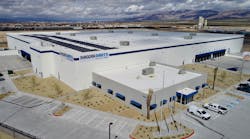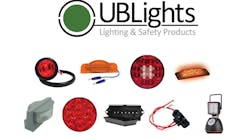To all whom it may concern: Be it known that I, Thomas Alva Edison, of Menlo Park, in the State of New Jersey, United States of America, have invented an improvement on Electric Lamps, and in the method of manufacturing the same, of which the following is a specification. The object of this invention is to produce electric lamps giving light by incandescence, which amps shall have high resistance, so as to allow of the practical subdivision of the electric light.
WITH that opening paragraph, Edison formally presented his light bulb invention to both the United States government and the world in his 1879 patent application.
The patent called for an electric lamp using “a carbon filament or strip coiled and connected … to platina contact wires.” In March 1880, a few months after the patent was granted, Edison and his team determined that a carbonized bamboo filament could last over 1200 hours. And the way was paved for universal domestic use of electric light.
Brad Van Riper, senior vice-president and chief technology officer for Truck-Lite Co Inc, has a poster of that patent on the wall of his office in Falconer, New York.
He's fascinated by how it all began, how far they've come since then, and in particular, how quickly the market has changed in recent years.
“For the next 100 years after Edison's patent, there was not a lot of new technology in incandescent lighting,” he says, noting that it wasn't until Irving Langmuir developed the gas-filled tungsten lamp in 1913 that filaments with a tight spiral became common in commercial lamps.
Nick Holonyak took lighting in a new and dynamic direction. While working at General Electric, he developed the first practical visible-spectrum (red) light-emitting diode (LED) in 1962. Ten years later, one of his former graduate students, M George Craford, invented the first yellow LED and improved the brightness of red and red-orange LEDs by a factor of 10. In 1976, TP Pearsall created the first high-brightness, high-efficiency LEDs for optical fiber telecommunications by inventing new semiconductor materials specifically adapted to optical fiber transmission wavelengths.
Van Riper says that in 1991, some of the Truck Trailer Manufacturers Association (TTMA) member companies introduced LEDs into their products, using a discreet device with an LED chip in the center, built into a reflector cup, including a gold wire that attaches the chip and anode lead.
In the past 20 years, a lot has happened, most of it tied to the exponential growth of lumens per watt (lm/W), an efficacy rating given to light bulbs to determine how much light they produce for each watt of energy they use. That means that those in the truck and trailer industry can get more and more light by using less and less electricity, and less drain off the vehicles.
LED performance has been improving at logarithmic rates, while the cost of light from LEDs has been simultaneously decreasing at logarithmic rates.
This concept is what's commonly referred to as Haitz's Law, named for Dr Roland Haitz of Agilent Technologies, who states that every 10 years the price of LEDs decreases by a factor of 10, while the performance (measured in flux per unit) increases by a factor of 20.
“He said that light output from discreet devices would double every 18-24 months,” Van Riper says. “For the last decade, he's been dead-on.”
Last year, research and lab levels reached 249 lm/W and mass production reached 200 lm/W. As recently as 2006, the lab level was 130 lm/W and mass production was 70 lm/W.
“An incandescent 60-watt light bulb produces about 820 lumens, which is about 8 lumens per watt,” Van Riper says, “so this is extremely robust technology, and it's getting brighter.”
Art Hernandez, VP of engineering for Grote Industries, says the growth in lumens per watt has come because of a refinement in the chip-fabrication process.
“They go to larger chips,” he says. “They have more surface area to emit photons and work more with accuracy of the depositing of materials in the fabrication process. That improves efficiency. There are a lot of packaging changes in the chips themselves to enable extracting heat away from the active layer of the diode. That also enables you to get a better-performing chip. There are a lot of things with the manufacturing process of the wafer and the chip itself — as that continues to improve and the capabilities continue to improve, the result is more light output.
“Another factor with white light in particular is that you're starting with blue dye and color-shifting using a phosphor. As that phosphor process gets more accurate, a higher level of capacity is allowing the binning to improve — selecting from the yellow side of the white light bins to the blue side.”
Jump in blue and white
Nathan Taylor, a project engineer for Peterson Mfg Co who works with LEDs and has done extensive diode research, says the biggest jumps in the past two years have come in blue and white LEDs.
“Blue LEDs and white LEDs are linked by materials they use, so they go hand in hand in development,” he says. “White LEDs have improved due to increased usage in everyday lighting, and that has driven their growth. Red and amber LEDs, which is what are used mostly in signal lighting, have moved along as well in a pretty big way in some products, but we haven't seen the growth we have in white.”
Says Hernandez, “A lot of LED manufacturers are driving towards offering solutions to replace current outdoor and interior architectural lighting. In order to do that, they have to work on more lumens per watt, making more efficient LED components and chip sizes slightly larger so they get more lumens per watt. Even though the push of chip manufacturers is the carrot for architectural lighting, the commercial- and vehicle-related businesses can benefit from it through better work lamps with higher lumen output, and also interior lighting for trailers and the vehicle itself. You can get more specific task lighting. If you're in a vehicle that has toolboxes, you could put in specialty lighting. There's a lot of benefit that will flow into the commercial vehicle industry based on LED manufacturers' push for more and more light.”
Prices of LED components are coming down, and that's because the intensities are improving and allowing manufacturers to put the same amount of light output in the same size package as what they used to with incandescent light.
“From a marketing perspective, as they improve the development of the diodes themselves, the expense per lumen is coming down,” says Kristen Goodson, Peterson's product manager. “It used to be that if you bought a high-powered diode, it was significantly more expensive than using several diodes that were of a lesser power that would add up to be the same. As they're improving diodes, it's evening out a little bit.”
Says Van Riper, “It means that costs will continue to come down on some of the more high-performance applications like stop lamps, turn lamps, and emergency lighting. One of the things we didn't think was possible five years ago — LED head lamps — is now possible. Costs are coming down because fewer LEDs are needed to achieve safe performance. New applications are possible because of an increase in lumens per watt.
“Some of the cost and performance breakthroughs have been accomplished due to investments by the Department of Energy in white LED technology. We in the transportation industry are gaining some of the benefits. We're getting more light per unit of power, and that helps us with using less electricity to do signaling and even head lamps on those applications that elect to use LED head lamps.”
According to LED Lighting Group LLC, a sales organization representing manufacturers of solid state lighting and accessories for business, industry, schools, and government:
-
LEDs will continue to get brighter, run cooler, and become more efficient.
-
LED lights will continue to get less expensive. Today, a dollar can buy about 100-150 lumens. The Department of Energy estimated that by 2020, that number will reach 1000 lumens.
-
LED fixture product generations will be measured in months, rather than years or decades, for traditional lighting.
-
LEDs will capture more of the lighting market, displacing traditional technologies, until they become the dominant lighting technology.
The LED Lighting Group says that the materials and fabrication processes used to make LEDs are continually improving, resulting in brighter, more efficient light sources. Contrast that with traditional lighting technologies such as fluorescent, incandescent, halogen, and high-intensity discharge, which are static and have not experienced significant improvements for years.
“It's the lighting technology of the future,” Van Riper says. “The people who really understand the costs of fleet operation don't use anything else. There are also safety benefits in the rich colors you get out of them. We've never had a lamp fail in a Truck-Lite lab because of vibration.”
Receiving a boost
The potential safety benefits are notable in light of two reports released by the National Highway Traffic Safety Administration (NHTSA) in the past 28 months: The Influence Of Rear Turn Signal Characteristics On Crash Risk, DOT HS 811 037, released in September 2008; and The Effectiveness Of Amber Rear Turn Signals For Reducing Rear Impacts, DOT HS 811 115, released in April 2009.
Federal Motor Vehicle Safety Standard (FMVSS) No. 108 allows rear turn signals to be either red or amber in color. Economic Commission for Europe (ECE) standards require that all rear turn signals be amber. Currently, manufacturers that produce vehicles for both the European and North American markets choose whether to produce all vehicles with amber rear turn signals or to equip the North American products with red rear turn signals.
According to NHTSA, this difference has led to questions about whether there are safety differences associated with each turn signal color: “Consistent color coding of functions might facilitate recognition of the meaning of the signal, allowing a driver to respond more efficiently. It is also possible that, apart from color coding, an amber turn signal is also more conspicuous to a following driver amid a field of red tail and stop lamps. This might allow an amber turn signal to be recognized more quickly or confused less often with another rear signal. The possible effects of turn signal color have been explored in a limited number of laboratory studies and crash analyses, with mixed results. Some laboratory studies suggest no effect on driver responses, while others cite advantages with amber lamps. Crash data analyses are similarly mixed. Examining rear-end collisions into turning vehicles, some reports have found no evidence of an effect of turn signal color on crash rates.”
NHTSA's analysis examined the crash records of seven states to determine if there is an association between rear-signal characteristics and the risk of a rear-end collision into a turning vehicle, taking into account a variety of other characteristics associated with the crash. To perform the analysis, detailed rear-signal characteristics were determined for the top 50 vehicle models involved in crashes in Kentucky, Maryland, New Jersey, North Carolina, and Pennsylvania during 2003.
For each model, the history of the rear signal configuration was examined over a 15-year window beginning with 1990, identifying rear signal color, lamp function configuration (ie, whether a turn signal is separated from the stop lamp or tail lamp), light source (LED, tungsten filament), and optical characteristics. The detailed lamp characteristics were combined with several other factors identified in the crash data in a stepwise logistic regression that modeled the odds of a rear-end collision while turning, merging, or changing lanes (ie, a turn-signal-relevant maneuver), as a function of all of these factors.
The first analysis found a reduction of between 3% and 28% in the odds of being the struck (versus striking) vehicle in a turn-signal-relevant maneuver when the vehicle was equipped with amber versus red turn signals. In addition, an effect of rear-signal light source was also observed such that LED turn signals appeared to reduce crash odds between 33% and 92%.
NHTSA's conclusions:
“Although interesting, the latter result is based on a single vehicle model equipped with LED turn signals and cannot be readily generalized to all vehicles equipped with LED turn signals. The second analysis found no association between turn-signal color and the odds of being struck in a turn-signal-relevant maneuver, although turn-signal reflector optics (versus lens optics) were found to reduce the odds by between 5% and 51%. However, similar to the previously described LED result, this result is largely based on a few vehicle models equipped with turn signals with reflector optics, and generalization to all such lamps would be premature. The differences between the two analyses indicate that selection of a contrast group can influence the effects observed. Because the contrast group in the first analysis is better insulated from the influence of rear signals, these results may be more accurate than those from the second analysis, implying that amber turn signals may be associated with lower odds of rear-end collision during turning, merging, or lane-change maneuvers.
“Although the analysis suggests that there may be a safety benefit associated with amber turn signals, it is unclear that turn signal color itself is completely responsible for the benefit. It is important to recognize that color is likely to be confounded with other factors that could also contribute to this effect. For example, although separation of functions was partly controlled for in this study, amber turn signals are usually separated from red stop and tail lamps. Also, requirements for the minimum and maximum candlepower of amber turn signals are 1.6 to 2.5 times greater than red turn signals.”
5.3% effectiveness
This purpose of The Effectiveness Of Amber Rear Turn Signals For Reducing Rear Impacts was to determine the effect of rear turn-signal color on the likelihood of being involved in a rear-end crash. This study was designed around the concept of “switch pairs” — make-models of passenger vehicles were identified that had switched rear turn signal color, and crash involvement rates were computed before and after the switch.
The principal finding of the report was that amber signals show a 5.3% effectiveness in reducing involvement in two-vehicle crashes where a lead vehicle is rear-struck in the act of turning left, turning right, merging into traffic, changing lanes, or entering/leaving a parking space. According to NHTSA, “The advantage of amber rear turn signals is shown to be statistically significant.”
“From those studies, they believe that because LED technology is monochromatic — which means yellow light only puts out yellow-wavelength light and red only puts out red-wavelength light — you're getting a richer quality of signal,” Van Riper says. “They believe they saw some statistically significant benefit that yellow LEDs may be better than yellow incandescent lamps. They haven't come up with the reason for it, so I've been talking to fleets — including tanker fleets and van fleets — about studies and potential benefits.
“What you get is a brighter signal that is dedicated to just turn signals. Currently, on the commercial vehicle market, you can combine the red stop and turn. And so when it comes on, you don't know whether it's a brake being applied or a turn. But with the amber turn signal, because it's a dedicated signal lamp, you're getting an indication that it's an intention to turn. I think the government sees that there may be some benefit from that. I think you'll be hearing more about that in the coming months. They're questioning whether they should make an amber turn signal mandatory.”
Jim Rowden, VP of engineering at Peterson, says he would be surprised if NHTSA were to make it mandatory — perhaps just a suggested practice.
“That's one of the debates going on right now in some of the industry groups,” he says. “On one hand, it might be more restrictive to have amber rear turn lights on some vehicles, especially in the trailer market. What is the best thing to do? What is the safest thing to do? What do we do with the information and how does that affect the regulation? There is the possibility that if you did require an amber rear turn, then a trailer manufacturer might have to have two more additional lights on the rear of trailer than what he has now.”
Says Goodson, “Currently, many trailer manufacturers with red lamps have one that would function as rear clearance and one as a tail light. If you require amber, you would have to add that third light in. Some of the smaller trailer manufacturers are using a rear clearance light as opposed to a second four-inch-round stop/turn tail light as their clearance function. The large trailers — semi-trailers, 53-foot vans — would be most impacted because they would have to change rear plates.”
It used to be a challenge to get good light output with an amber LED because of what Hernandez calls a “droop.” The output would be good initially, and as the LED continued to operate, it would drop off to the point where it had to be tested and validated after that warm-up period.
An amber light required significantly more LEDs than a red light, so as result, the cost would be higher.
“If we were using yesterday's technology to meet an amber turn signal requirement, your costs would go up just based on the LED count,” Hernandez says. “Today, they're using the same principle as they're doing with white — they're starting with blue and using phosphor to shift to get a yellow and get higher-performing yellow or amber LEDs that won't have the droop you saw in previous technology, and will enable you to use fewer LEDs.”
Says Taylor, “It's just a matter of reducing the number of LEDs needed to meet the requirement — that has come down because the price of components has been reduced because of increased output. It's almost one of those economy-of-scale things: As production rates and usage of the products go up, that drives prices down on components and you start to see a proliferation of competition through new components. Ten years ago, it might have been a deal where it required 30 or more LEDs to get that kind of light output, whereas today you can get it with five or more.”
What does the future hold for the further development of LEDs? The experts check in with their ideas:
Taylor: “The predominant trend is a reduction in the number of LEDs necessary. There are a number of different concepts and ideas as far as being able to use what people call a ‘light engine,’ where you would put a single light source some place on a vehicle and it would be able to drive multiple outputs essentially, multiple lamps on the vehicle somewhere. It would be piped through fiber optics to different places where it would centralize the production of light and distribute it to different places.”
Rowden: “With a fiber-optic system, you don't need electrical connections. All you need are lenses that provide the photometric requirements of FMVSS 108, but there is not a physical wire that goes to each of the locations. That pretty much will be a system driven on how many lumens you can get out of a light source to drive all those functions.”
Taylor: “There are other things out there — organic LEDs and other flat-light sources that people have looked into and developed — where light can be more easily integrated into the body of a vehicle or trailer. Shape and size become less of a constraining issue because of the flexibility of the materials.”
Hernandez: “The industry predicts it will continue to outperform Haitz's Law. They have their own curves they're looking at, so they're predicting much brighter LEDs becoming available in the near term and continued rapid acceleration of performance. That's really putting LEDs at the cusp of starting to take over for a lot of architectural lighting. It will give you more flexibility. If you're not pushing top-end performance and not satisfied with medium performance, you will be able to get a lighter-weight product that doesn't have the challenges of heat.
“It will give you a wider range of availability of product as far as light output. Maybe it will be an explosion like your options on cell phones, if you can imagine that. It will get very confusing out on the market. How do I compare A to B? Why is this one bigger? In my mind, it will cause some confusion. It will be up to a company to understand applications and help the customer make the right choices for their application.”








